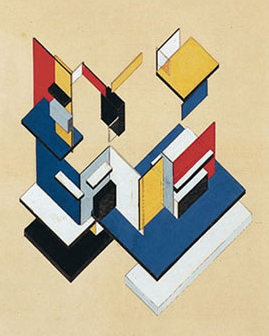
Theo van Doesburg paved the way for abstract painting
 |
Doesburg's paintings were reduced to simple lines and geometric shapes in primary colors. In 1917, van Doesburg was already a key figure, along with Mondrian, in forming the influential art group and magazine De Stijl.
Theo van Doesburg was born on August 30, 1883, in Utrecht as Christian Emil Marie Küpper, adopting his artistic pseudonym only later. At the beginning of the 1920s, he primarily focused on promoting De Stijl in Germany and France and also taught at the legendary Bauhaus art school. His aesthetic theories had a significant influence on modern architecture, including the works of Le Corbusier and Ludwig Mies van der Rohe. Van Doesburg also briefly created in the spirit of Dadaism, which was introduced to him by the German painter Kurt Schwitters. However, after a few years, he returned to pure abstraction.
The English translation is powered by AI tool. Switch to Czech to view the original text source.
0 comments
add comment











